Will 3D Gestures Curb Distracted Driving?

There could be a revolutionary new way to control the accessories in your car, but some of the biggest automakers in the world disagree on whether or not it will be worthwhile.
At the 2015 Consumer Electronics Show in Las Vegas, Volkswagen showed off its Golf R Touch concept, a vehicle that featured no buttons or switchgear. Instead, everything is controlled by touch screens and 3D gestures.
“Volkswagen’s display and control concepts are designed to create a platform that is easier and more intuitive to operate,” Volkswagen spokesman Darryll Harrison said. “The Golf R Touch concept is a fully functional vehicle that Volkswagen used to highlight the potential next generation of in-car technology by utilizing expanded proximity sensors, infrared, cameras and other innovations.”
Seeing it in motion is like magic. You can open and close the sunroof by waving your hand in the direction you want it to move. You can also manipulate features like climate control and music payback without touching any of the screens.
But is it really more intuitive or safer than what we currently have on roads today?
“Volkswagen’s top priority is to ensure that controls are safe to use, particularly while in motion, while also being easier and more intuitive to operate,” said Harrison.
“Gesture control concepts have been tested extensively. Through this research, automotive gesture control technology does not only utilize operating concepts similar to tablets or smartphones, but is enhanced specifically for automotive applications,” he said. “Features such as proximity sensors and other measures such as visual and acoustic feedback can substantially reduce the degree of driver distraction during the operation.”
Practical? Maybe not
“There’s no point when it comes to gestures in a car,” he said. “There’s no way they will reduce the cognitive load on the driver. If you want to do something like change the radio station, then you still have to think about how you’re going to do it, whether it’s a button, voice command or gesture.”
Volkswagen and GM aren’t the only manufacturers weighing the possibility of integrating gesture controls into future vehicles.
Hyundai first introduced the idea with the HCD-14 Genesis Concept at the 2013 Detroit Auto Show.
The Korean company demonstrated the technology in motion, more recently at CES while maintaining that it is only studying gesture based controls. Miles Johnson of Hyundai’s Connected Care Publicity team also believes that “a gesture recognition system would enable intuitive controls and enhance driver safety.”
Less Distracting Than…
However, a report by the University of Utah found that even speech recognition brings a high mental workload.
“We already know that drivers can miss stop signs, pedestrians and other cars while using voice technologies because their minds are not fully focused on the road ahead,” AAA CEO Bob Darbelnet said in a statement. “We now understand that current shortcomings in these products, intended as safety features, may unintentionally cause greater levels of cognitive distraction.” If we can’t even talk to our cars without getting distracted, could gesture based commands be any easier?
It’s an issue the National Highway Transportation Safety Administration is keeping a close eye on. Currently the government agency is considering conducting a study to investigate the potential of distraction with gesture-based systems. “We are also discussing with industry what research they have done to demonstrate that these systems can be implemented safely,” the agency said in statement.
A System for Everyone
Fortunately, there are many ways to interact with a car.
“While we have done some work with gesture based interfaces, I just haven’t seen a perfect use-case scenario for them,” said Andrew Poliak, global director, business development for QNX Software Systems.
QNX, a subsidiary of BlackBerry, provides the software powering infotainment systems in a wide range of new vehicles being sold today. Its client list includes name like Audi, Toyota, General Motors, BMW and Porsche.
“But we make our platforms multi-modal, meaning that we try to support as many ways of interacting with the car as possible,” Poliak said. An automaker will support and use whichever input method they deem best, whether it’s gestures, a joystick, a knob or a touchscreen.
QNX does have experience with gesture based controls dating back to 2013 when it showcased a Bentley Continental GT Convertible at CES. It featured a large 17-inch touchscreen in the center console, except that screen wasn’t actually touch-sensitive. Instead it used a proximity sensor and camera to simulate responses on the screen. Those sensors could also tell when your fingers would come close to the screen in order to show you context sensitive buttons, while the camera could tell what you were doing with your fingers and hands and react accordingly.
Interestingly enough it looks like the automotive tech-giant seems to have swept its gesture demonstrations away for now. The company instead dedicated its latest concept car to advanced driver assistance systems rather than 3D cameras.
“When we show concept cars, we like to push the limit of what is possible in the real world,” said Poliak when questioned about the lack of 3D gesture demonstrations at CES this year. “But we do get involved and want to know what people are thinking about when it comes to things like gestures.”
Gesture based controls are on the radar for QNX, but of little relevance. Poliak said some of the company’s top clients are working on projects with the technology, but that the implementation will be limited. “They’ll likely deploy them in pieces, as people get used to other forms of body-tracking cameras like in video games” he said.

Sami has an unquenchable thirst for car knowledge and has been at AutoGuide for the past six years. He has a degree in journalism and media studies from the University of Guelph-Humber in Toronto and has won multiple journalism awards from the Automotive Journalist Association of Canada. Sami is also on the jury for the World Car Awards.
More by Sami Haj-Assaad



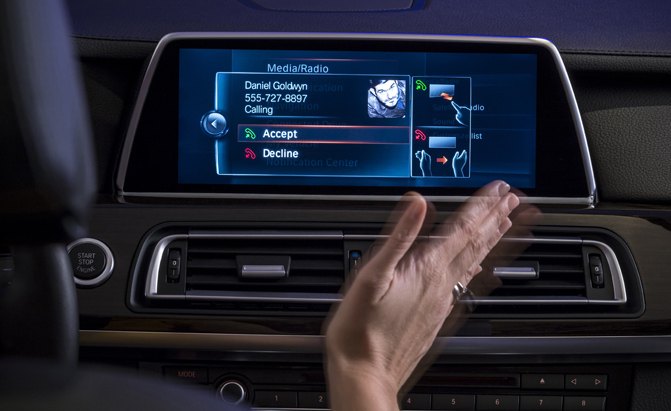























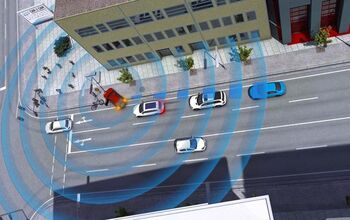
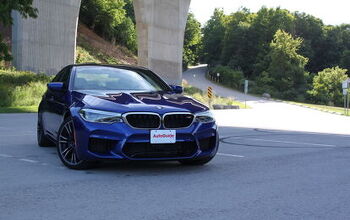
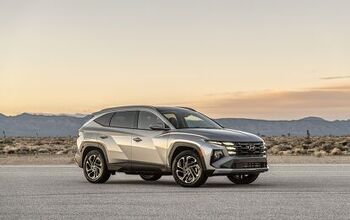


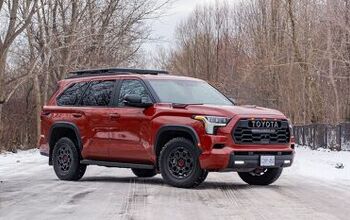


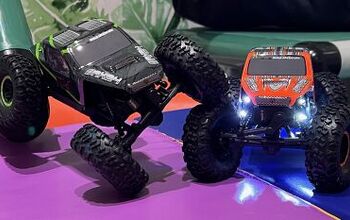



Comments
Join the conversation
This is absurd. Ford got bashed with MyFord Touch for not having any knobs or buttons. Cadillac is catching the same flak with their centre console and CUE. Knobs and physical buttons work. Why change it? I hate looking for something on a screen when I'm moving. It's more difficult than grabbing onto a knob.
Please give me a break. What a stupid idea. The best is voice recognition. Keep your eyes on the road and speak a command. My GPS works great and once tech gets better voice recognition commands will be mainstream.